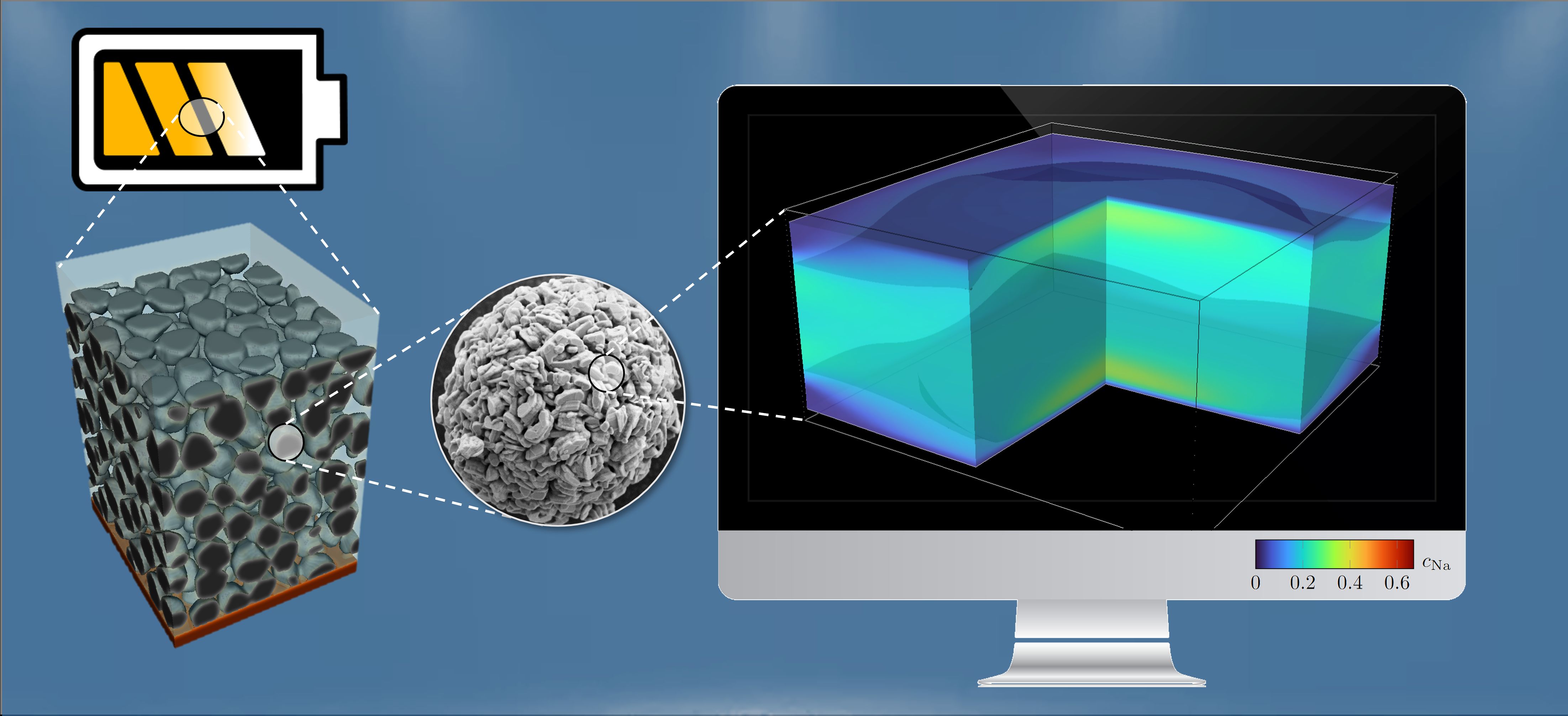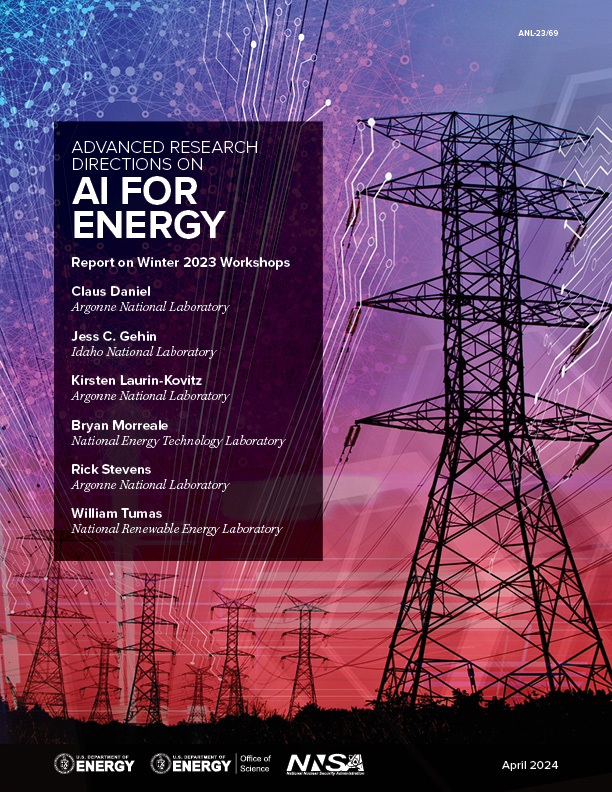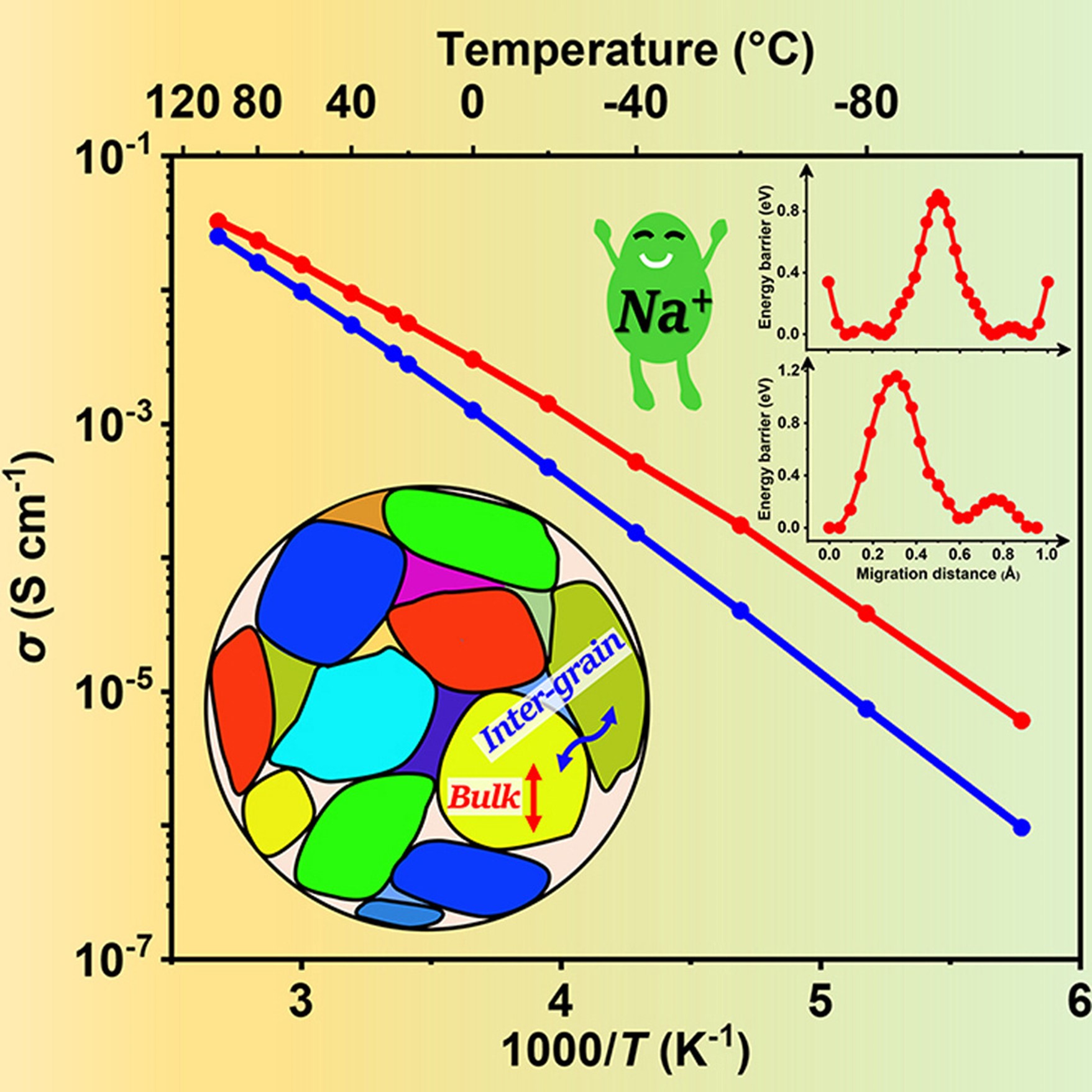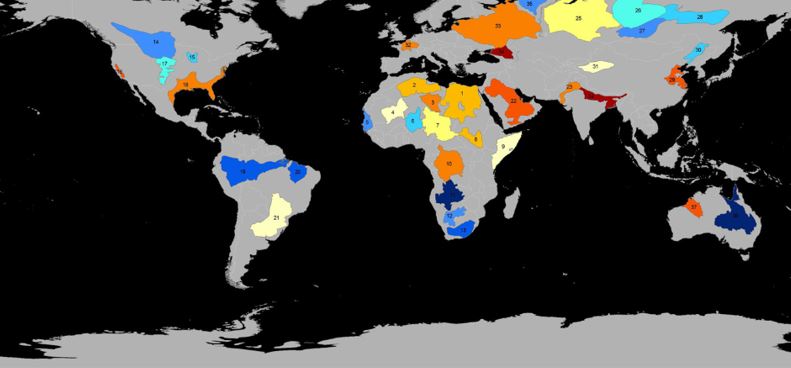KERI / Kumoh National Institute of Technology/ Inha University research team, proposing ‘FeSn2 (Iron Tin)’ as anode materials. Achieved higher capacity and stability , published in the October issue of the prestigious journal ‘Joule’
Tag: Energy
Red light, big impact: phytochromes in strawberry development unveiled
A new study has revealed how light regulates the growth and pigmentation of woodland strawberries. Researchers identified the FvePhyB gene, a red/far-red light photoreceptor, as a key player in controlling plant height and anthocyanin production. These findings could reshape strawberry farming by optimizing light conditions to improve crop quality and yield.
Energy-thirsty indoor vertical gardens ripe for improvement
Indoor vertical gardens are gaining popularity among homeowners and restaurants, allowing them to grow microgreens year-round, but new research has identified a major drawback: their demands on energy.
KIMM initiates a giant leap in the development of technologies for storing alternative energy sources by developing, for the first time in the country, a cryogenic turboexpander capable of cooling gases to temperatures as low as -183 degrees Celsius
The Korean research team of the Korea Institute of Machinery and Materials has succeeded in developing an oil-free cryogenic turboexpander that uses Zero-GWP refrigerants, and has completed the demonstration testing of an expander used for natural gas liquefaction.
AFL women must ‘carb up’ to maximise footy performance
Pasta, breads, rice, and cereals, they’re the carb-loaded foods that fuel our bodies for high-intensity exercise and sports. So as the 2024 footy season kicks off, making sure AFLW athletes get enough of the good stuff is key for peak performance.
The world’s fastest single-shot 2D imaging technique films ultrafast dynamics in flames
Candle flames, cars, and airplanes emit harmful gases and particles, which are formed through highly complex processes involving extremely fast reactions and often transient flow conditions. To better understand these processes, scientists from the USA and Europe developed the fastest 2D planar imaging system.
Smithsonian Scientists Help Uncover How The Solar Wind Gets Its Energy
Since the 1960s, astronomers have wondered how the Sun’s supersonic “solar wind,” a stream of energetic particles that flows out into the Solar System, continues to receive energy once it leaves the Sun. Now, thanks to a lucky line up of two spacecraft currently in space studying the Sun, they may have discovered the answer.
Multispectral Smart Window: A Step Towards Healthier Indoor Environments
A new multispectral smart window has been developed, capable of adjusting light transmission and providing robust microwave shielding. Combining liquid crystal scattering with dye doping, this technology allows independent control of transmittance and scattering in a single layer.
Korean Researchers Overcome Critical Challenges in Developing Fire-Risk-Free Aqueous Zinc Batteries
The operation performance of the battery and the stability of large-area deposition have been verified, bringing the technology closer to commercialization. Also, the research was published as the cover article in the August issue of the world-renowned journal in the field of energy and materials, Advanced Energy Materials.
Chiral quantum heating and cooling with an optically controlled ion
Exploring quantum heat engines is vital for designing highly efficient power systems beyond classical limits and for understanding quantum thermodynamics. Scientists demonstrate the first implementation of chiral thermodynamic cycles and quantum state transfers in a trapped ion by dynamically encircling a closed loop excluding Liouvillian exceptional points.
Princeton graduate student wins prestigious plasma physics award
Eduardo Rodriguez, a 2022 graduate of the Princeton Program in Plasma Physics hosted by the U.S. Department of Energy’s (DOE) Princeton Plasma Physics Laboratory (PPPL), has won the Marshall N. Rosenbluth Outstanding Doctoral Thesis Award.
Energy companies pressure landowners into fracking, study shows
Energy companies use persistent and personalized pressure to get landowners to give permission for hydraulic fracturing (fracking), and even when landowners decline, companies use legalized compulsion to conduct fracking anyway, according to a new study led by researchers at UNLV and Binghamton University, State University of New York.
Atoms in advanced alloys find preferred neighbors when solidifying
A discovery that uncovered the surprising way atoms arrange themselves and find their preferred neighbors in multi-principal element alloys (MPEA) could enable engineers to “tune” these unique and useful materials for enhanced performance in specific applications ranging from advanced power plants to aerospace technologies, according to the researchers who made the finding.
Esther Takeuchi Honored in Special Festschrift Issue
Esther Sans Takeuchi, a materials scientist and chemical engineer at the U.S. Department of Energy’s (DOE) Brookhaven National Laboratory, was honored by the Journal of Physical Chemistry C in a special Festschrift issue earlier this year.
Innovation Crossroads welcomes seven entrepreneurs for Cohort 2024
Seven entrepreneurs comprise the next cohort of Innovation Crossroads, a Department of Energy Lab-Embedded Entrepreneurship Program node based at Oak Ridge National Laboratory. The program provides energy-related startup founders from across the nation with access to ORNL’s unique scientific resources and capabilities.
KERI advances in cathode composite design for sulfide-based all-solid-state batteries
Dr. Ha’s research team at KERI developed an optimal cathode composite by partial coating of solid electrolyte. They used specialized equipment and simulations to determine the best conditions, with their research published in an international journal
Energy planning in Ghana as a role model for the world
Under the leadership of Empa scientist Mashael Yazdanie, an international research team is investigating ways to better plan for climate-resilient energy systems in the Global South.
Woody biomass waste derivatives in decarbonised blast furnace ironmaking process
Abstract Modern ironmaking process relies significantly on fossil-related fuels, which ultimately results in the enormous CO2 emitted into the atmosphere. Biomass of plant origin, as a carbon-neutral energy source, has been considered as an alternative to fossil-based reducing agents such as…
Yeast Fuel, Developed by Chula’s Faculty of Science Soon to Expand Its Production for the Aerospace Industry
Researchers from Chulalongkorn University have made use of forage grass to feed microorganisms and convert the resulting fat into jet fuel. They aim to expand petroleum-based oil replacement production to reduce impacts on human health and the environment.
Pinpointing coal plants to convert to nuclear energy, considering both practicality and community support
An assessment ranks the feasibility of converting 245 operational coal power plants in the U.S. into advanced nuclear reactors, providing valuable insights for policymakers and utilities to meet decarbonization goals, according to a new study by University of Michigan researchers.
KIER Develops ‘Viologen Redox Flow Battery’ to Replace Vanadium.’
Dr. Seunghae Hwang’s research team from the Energy Storage Research Department at the Korea Institute of Energy Research has successfully enhanced the performance and cycle life of redox flow batteries, a prominent large-capacity energy storage device, by introducing functional groups that replace the active materials and improve solubility and stability
Understanding quantum states: New FAMU-FSU research shows importance of precise topography in solid neon qubits
A study led by FAMU-FSU College of Engineering Professor Wei Guo that was published in Physical Review Letters shows new insight into the quantum state that describes the condition of electrons on an electron-on-solid-neon quantum bit, information that can help engineers build this innovative technology.
Harvesting Unused Micro-vibration to Generate Electricity
The Korea Research Institute of Standards and Science (KRISS) has developed a metamaterial that traps and amplifies micro-vibrations in small areas.
Processes, models and the influencing factors for enhanced boiling heat transfer in porous structures
Abstract Due to the increasing volume of electric vehicles in automotive markets and the limited lifetime of onboard lithium-ion batteries, the large-scale retirement of batteries is imminent. The battery packs retired from electric vehicles still own 70%–80% of the initial capacity, thus having…
Enhancing the performance of proton exchange membrane water electrolysis by constructing electron/proton pathways
This research initiative entailed the development of a composite conductor capable of concurrently facilitating the conduction of protons and electrons. Functioning as a catalyst binder, the composite conductor established a dual conduction pathway for protons and electrons.
Synergy of green energy technologies through critical materials circularity
Abstract Synergies between technology flows is essential to balance the consumption of their related critical materials and promote a sustainable green economy transition. Using dynamics modelling, a comprehensive analysis of silicon flows applied in green energy technologies such as photovoltaic…
Energy saving and economic competitiveness of solar desiccant cooling technology – A case study of the Moroccan Kingdom
Abstract As many countries in the world, Morocco is vulnerable to climate change having direct impacts on its main economic sectors highly dependent on natural resources. This is exemplified, among other things, by long periods of drought, increase of average…
Polyphase wireless power transfer system achieves 270-kilowatt charge, sets another world record for electric light-duty passenger vehicles
Researchers at the Department of Energy’s Oak Ridge National Laboratory have successfully demonstrated the first 270-kW wireless power transfer to a light-duty electric vehicle. The demonstration used a Porsche Taycan and was conducted in collaboration with Volkswagen Group of America using the ORNL-developed polyphase wireless charging system.
Multi-criteria decision-making for techno-economic and environmentally sustainable decentralized hybrid power and green hydrogen cogeneration system
Abstract For global sustainable development, supplying reliable, clean and affordable energy to all is critical. Also to achieve the stringent carbon emission reduction target, the global energy transition is towards increasing the renewable share of total power generation. As renewable resources are intermittent,…
Paradigm shift in energy planning
To meet the complex requirements of future building and energy systems, Empa researcher Matthias Sulzer and Berkeley Lab researcher Michael Wetter are proposing a paradigm shift in planning of such systems: They call for a more automated and model-based planning process, as has long been common practice in the computer chip and automotive industries.
Real-time capacity cost obligations design in high-renewables energy markets
Abstract Under high renewable penetration, the declining energy prices cannot reflect capacity costs of generators. To deal with the missing money problem, several markets around the world have introduced capacity remuneration mechanisms. These mechanisms act well for the generation side…
Successful Workshop for Leading the ‘Carnot Battery’, the Future of Energy Storage
On May 17th (Friday), the Korea Institute of Energy Research (KIER) held a workshop at its main headquarters in Daejeon with experts from industry, academia, research, and government to discuss the technology, policy status, and development direction of the Carnot Battery in relation to energy storage and heat pumps.
Bhatia named new head of ITER projects at PPPL
Ravinder Bhatia, a leader and engineer with three decades of experience managing collaborative science initiatives, is the new head of ITER projects at PPPL. In this role, Bhatia oversees the design and fabrication of six diagnostic systems that PPPL is building for ITER.
Overcoming the Volatility of Renewable Energy, Green Hydrogen is ‘the Best’.
A research team in Korea Institute of Energy Research has successfully demonstrated the effectiveness of a green hydrogen system used to supplement the volatility of renewable energy.
Vibration to power: bidirectional piezoelectric systems for future aerospace structures
In a significant leap for aerospace and mechanical engineering, researchers have developed a cutting-edge bidirectional energy-controlled piezoelectric shunt damping technology. This breakthrough not only significantly enhances the suppression of vibration amplitudes in mechanical systems without external power but also harnesses electrical energy, heralding a new era of self-powered solutions.
Innovative Material for Sustainable Building
Researchers at the Karlsruhe Institute of Technology (KIT) introduce a polymer-based material with unique properties in the latest issue of the journal Nature Communications. This material allows sunlight to enter, maintains a more comfortable indoor climate without additional energy, and cleans itself like a lotus leaf. The new development could replace glass components in walls and roofs in the future
UAH-led FTPP recognized nationally as National Science Foundation ranks in top 10 best places to work
The $20 million, five-year Future Technologies and Enabling Plasma Processes (FTPP) initiative led by The University of Alabama in Huntsville (UAH), a part of the University of Alabama System, is cited in “The Washington Post” as a key contributor toward the National Science Foundation’s (NSF) top-10 ranking in the 2023 Federal Employee Viewpoint Survey (FEVS) of the Best Places to Work in the Federal Government.

Batteries: Modeling Tomorrow’s Materials Today
Which factors determine how quickly a battery can be charged? This and other questions are studied by researchers of Karlsruhe Institute of Technology (KIT) with the help of computer-based simulations.
Deep-sea sponge’s “zero-energy” flow control could inspire new energy efficient designs, according to research co-led by NYU Tandon School of Engineering
The deep-sea Venus flower basket sponge can filter feed using only the faint ambient currents of the ocean depths, no pumping required, new research reveals. This discovery of natural ‘“zero energy” flow could help engineers design more efficient chemical reactors, air purification systems, heat exchangers, hydraulic systems, and aerodynamic surfaces.
KITECH Develops Deformable Energy Storage Device via Laser Technology
The joint research team, led by Dr. Chanwoo Yang and Researcher Seong Ju Park from Korea Institute of Industrial Technology(KITECH), along with Prof. Jin Kon Kim and Dr. Keon-Woo Kim from POSTECH, has successfully developed a compact energy storage device with excellent elasticity.
Better Plants program leads to carbon reduction, cost savings for US manufacturing
Helping hundreds of manufacturing industries across the United States increase energy efficiency requires a balance of teaching and training, blended with scientific guidance and technical expertise. It’s a formula for success that researchers at Oak Ridge National Laboratory have been providing to the Department of Energy’s Better Plants program for more than a decade.

How artificial intelligence can transform U.S. energy infrastructure
A groundbreaking report from the DOE’s national laboratories provides an ambitious framework for using artificial intelligence to accelerate U.S. clean energy deployment in the face of climate change.

New Sodium-ion battery tech boosts green energy storage affordability
In significant advances for energy-storage technologies, researchers have developed high–ionic-conductivity solid-state electrolytes for sodium-ion batteries that dramatically enhances at room temperature. This breakthrough not only paves the way for more efficient and affordable energy storage solutions but also strengthens the viability of sodium-ion batteries as a sustainable alternative to traditional lithium-ion systems.

Divining peak groundwater
New research predicts peak groundwater extraction for key basins around the globe by the year 2050. The map indicates groundwater storage trends for Earth’s 37 largest aquifers using data from the NASA Jet Propulsion Laboratory GRACE satellite.
UW–Madison biochemist wins prestigious forestry prize for discoveries that support sustainable energy and product innovations
The world’s top prize in forestry research has been awarded to University of Wisconsin–Madison biochemistry professor John Ralph for work that has led to new uses for one of the world’s most abundant natural resources.
UA Little Rock Receives $5 Million to Advance Cybersecurity Education and Innovation
The University of Arkansas at Little Rock has received $5 million in federal funding aimed at enhancing cybersecurity in the energy sector through education, workforce development, and innovation. The award comes from appropriations language authored by U.S. Sen. John Boozman passed into law in December 2022. The funding is provided by the U.S. Department of Energy Office of Cybersecurity, Energy Security, and Emergency Response.
Unlocking the secrets of forest heights: the role of GEDI LiDAR technology
A team of researchers has unveiled a novel approach to accurately characterizing tree height composition in forests using the Global Ecosystem Dynamics Investigation (GEDI) Light Detection and Ranging (LiDAR) technology.
New Technique Lets Scientists Create Resistance-Free Electron Channels
Researchers have taken the first atomic-resolution images and demonstrated electrical control of a chiral interface state – an exotic quantum phenomenon that could help researchers advance quantum computing and energy-efficient electronics.
Development of Durability Evaluation Technique Against Solar Variability for Advancing Green Hydrogen Production
Dr. Bora Seo’s research team from the Hydrogen and Fuel Cell Research Center at the Korea Institute of Science and Technology (KIST), led by Director Yoon Seok-jin, has developed a durability evaluation technique for green hydrogen production devices with step durations as short as one second, utilizing actual solar irradiance data.
Prize of the Leopoldina for young scientist Jingyuan Xu from KIT
With the Leopoldina Prize for young scientists 2023, German National Academy of Sciences Leopoldina honors Dr. Jingyuan Xu, who researches novel heating and cooling technologies for the energy transition at Karlsruhe Institute of Technology (KIT). Currently, the young engineer can boast two more significant awards: the Hector RCD Award as well as admission to the Global Young Academy, an exclusive association of international young scientists.